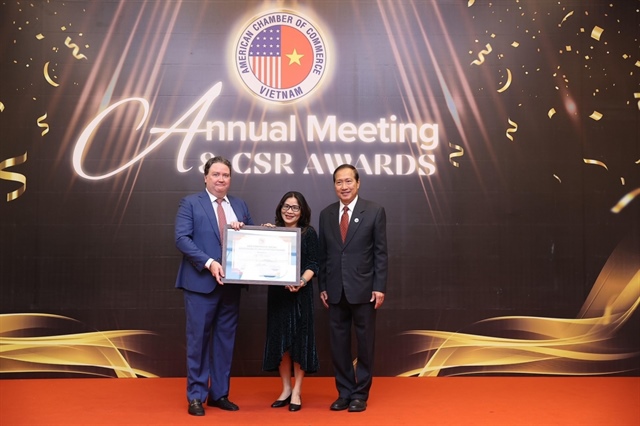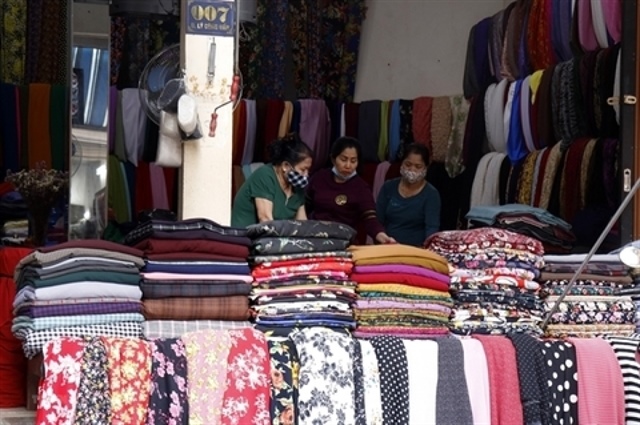Vietnamese banks overly dependent on credit growth
Vietnamese banks overly dependent on credit growth
Many banks complain that the cost of capital increases and they cannot increase lending rates, so interest margins are quickly narrowing, which affects profit.

Therefore, they have to depend on credit growth to earn profit.
The difference between loan rates and deposit rates in commercial banks contracted significantly in the last three years because banks have to increase deposit rates in order to be able to compete and attract depositors. This leaves banks unable to increase loan rates to attract borrowers too.
To improve this situation, many banks said they have to increase revenues from services. However, not every bank is capable of doing so, especially small banks because of low market share and credit growth.
For that reason, many banks expect credit this year to continue growing. Income from lending makes up between 70-80 per cent of banks’ revenue. There are even banks whose net interest income (NII) contributes 91 per cent to their revenue.
For instance, according to VietinBank’s consolidated financial statement for the fourth quarter of 2016, the bank’s pre-tax profit reached $374 million, a 16 per cent increase on-year, and took the lead in the finance sector. NII went up to $228 million, 20 per cent higher than in the corresponding period of 2015, raising the accumulated NII of the whole year to $984 million, 19 per cent more than last year, and correspondently contributed 90 per cent to the total income of 2016.
In 2016, Vietcombank generated more than $818 million in NII, 19.8 per cent higher than in 2015, making up 70 per cent of the total. Vietcombank is considered to have had the highest increase in services revenue in the banking system last year.
ACB’s NII rose by 17 per cent on-year to $302 million, and its pre-tax profit increased significantly by 26.8 per cent, reaching $73 million.
VPBank had a consolidated pre-tax profit of $215 million in 2016, while that of the parent bank was only $149 million. The larger part of the total income of 2016 also came from NII, which reached $663 million, a $197 billion increase since last year. VPBank’s credit grew by 17.5 per cent.
Meanwhile, Eximbank achieved only $17 million in pre-tax profit in 2016. According to an evaluation of Ho Chi Minh Securities Corporation (HSC), Eximbank profit during the year was comparatively low given its current and competence.
The driving factor for this was the low increase in lending and depositing activities, which reduced NII and the profit margin as well, even though non-interest income rose and provisions for loans and losses (PLL) dropped.
HSC reported that in 2016, Eximbank credit rose only 2.51 per cent, by $3.8 billion, and lending only grew in the last quarter of 2016. In detail, short-term loans increased by 7.58 per cent, reaching $1.4 billion, while medium to long-term loans fell by 0.5 per cent, to $2.3 billion.
According to HSC, the increase in short-term loans and decrease in medium to long-term loans affected Eximbank’s profit margin. This index reduced to 2.76 per cent (0.13 per cent lower than in 2015) due to a 0.51 percentage point increase in cost of mobilising capital (from 4.29 to 4.80 per cent), which leads to a 9.29 per cent drop on-year in NII, to $135 million.
HSC forecasted that in 2017, despite an estimated pre-tax profit of $32 million, the bank will not be able to accelerate profit growth due to the burden of PLL.
At present, the deposit interest rate fluctuates around 6-7.8 per cent. Meanwhile, to attract borrowers, the bank accepts losses from its competitive interest rates of 6-6.5 per cent per year and even less for VIP customers.
Dr Nguyen Van Thuan, dean of the Faculty of Finance and Banking of Ho Chi Minh Open University, said that banks, especially small ones, currently rely on credit as a source of income. On the other hand, the income from consumer lending still contributes significantly to the total income, which encourages banks to promote consumer lending.




















